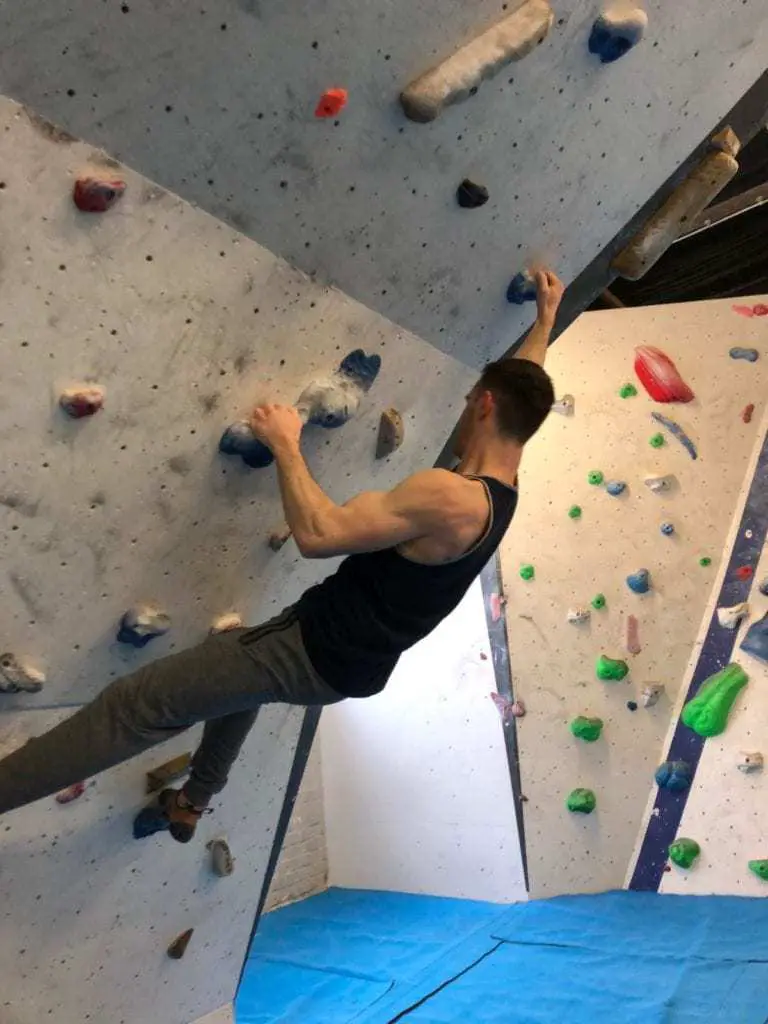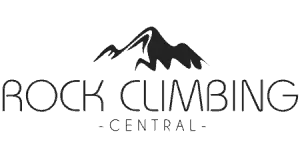
When starting bouldering you’ve probably heard that you need a bit of strength, but you’re not sure how strong you need to be and in what way. In this article I’ll be going through the different ways or areas that you will or won’t need to be strong for bouldering. I’ll also be comparing the strength you’ll need for bouldering compared to sport climbing.
So, do you need to be strong for bouldering? Generally, the more technique you have, the less strength you’ll need when bouldering. However, when bouldering you’ll need to have at least some form of strength mainly in your forearms, back, core and shoulders. These muscle groups are the primary muscle groups that you’ll be working when bouldering. Beginner boulderers seem to use strength quite a lot at first because of their lack of technique.
Read on for more information including whether you need to be stronger for bouldering or sport / rope climbing, and a few different ways to become stronger for bouldering and climbing.
Page Jumps
- How Strong Do You Need to Be for Bouldering?
- Do You Need to Be Stronger for Bouldering?
- Do You Need to Be Stronger for Outdoor Bouldering or Indoor?
- What Other Physical Areas Do You Need to Be Strong in When Bouldering?
- Does Bouldering Make You Strong?
- Related Questions
How Strong Do You Need to Be for Bouldering?
When bouldering, the misconception that most beginners have is that you need to use a lot of your muscular strength to reach the top of a climb. Eventually, as you progress and get more experience, you realise that technique is much more important than strength, and will also help a climber endure more climbs, get less injuries, and get better at climbing. You will, however, need at least some strength in different areas – enough to pull up your weight when doing certain movements and transitions. As discussed in my article “Why Rock Climbers Are Skinny”, your bodyweight plays a part in how difficult bouldering or climbing is.
The main difference in strength for an elite climber compared to a recreational or beginner climber is grip strength in the fingers (Source). This shows that if you’re thinking about strength in any real area when it comes to bouldering or climbing, you must think about finger strength.
One thing to note when talking about strength for bouldering or climbing is that the average bodybuilder probably won’t be strong in the right way to perform well on a climbing wall. This is because the strength acquired isn’t the right type of strength. What climbers want to achieve is something called muscular endurance, because our muscles need to be able to endure a large amount of load for a longer time. I’ve written an extensive article about how to improve muscular endurance which you can find here.
How Do You Get Stronger for Bouldering?
As mentioned in the last sub-heading, finger strength should be the main focus for a climber if they want to become stronger and better at bouldering or climbing. So then, how do we increase our finger strength without injuring our fingers, hands, and/or forearms? There are a few different ways and some should only be practised at a more advanced level.
Climb More (Beginners, Intermediate, Advanced)
Climbing more is the best way a beginner can initially increase their grip or finger strength for climbing. You don’t want to overdo yourself though, as this can cause problems. Check out my article on how often a beginner should climb for more information. Obviously, whether you’re a beginner climber or even an advanced climber, climbing or bouldering more on the grades that push you will help improve your finger strength.
Finger Resistance Trainers (Beginner, Intermediate)
Finger resistance trainers are pretty cheap and are recommended for beginner and intermediate climbers who want to keep improving their finger strength throughout the day whenever they can, especially if they don’t have enough time to hangboard or climb more. They are known to increase strength, muscular endurance, dexterity, and range of motions. Click here to check out the price of a finger resistance trainer on Amazon.
Hangboarding (Intermediate, Advanced)
Hangboarding is a tried and tested technique with many different exercises to be done for intermediates and more advanced climbers. Beginners should not attempt this until they’ve gained a significant amount of grip strength to make sure they don’t incur any injuries. Usually, after around 3-6 months worth of climbing a beginner will be able to hangboard in some form. I’ve tried many types of hangboards, but I’ve found the cheaper ones that give the best results and have included them in my recommended hangboards page along with an exercise, an explanation of how to hangboard, and more information you might be interested in.
Campusing On Crimps / Hangboards (Advanced)
Campus climbing on hangboards or small crimpy holds for a significant amount of time should only really be attempted by more advanced climbers, as this can cause injuries on fingers/forearms that aren’t ready for more long-term load. However, advanced climbers can really increase their finger strength by doing this.
Do You Need to Be Stronger for Outdoor Bouldering or Indoor?
Usually you’ll need to be stronger for outdoor bouldering, because there are more slopers and crimpy holds. However, this does depend on the type of climb you choose for your attempt whether indoor or outdoor. There can be some indoor climbs that feel a lot harder than your average outdoor climb because of the addition of slopers.
Slopers are holds that are more rounded and usually quite large. The name is given to them because they generally slope away from the wall and have no edge for your fingers to grip on. You’ll generally see them on problems aimed at more advanced climbers, both indoor and outdoor. Having better finger strength will help you grip onto slopers. Generally, slopers made of resin can be harder to grip than those made of stone, which is why they’re considered harder indoors than outdoors.
What Other Physical Areas Do You Need to Be Strong in When Bouldering?
Other areas you need to be strong in are your upper back, core, and shoulders. These are some of the main muscular groups you’re going to be using throughout your bouldering session, along with grip strength.
Back
The main back muscle used when climbing is the latissimus dorsi, aka the lats. The lats are the big, wing-shaped muscles on the side of your back and are used whenever you do a pull up.
Core
The core helps you balance, keep your centre of gravity, and generally transition from one area of the wall to the other. Your core includes your abdominal muscles and obliques, and it’s used a lot more than you might think when climbing.
Shoulders
The posterior deltoids are the main muscles climbing targets in your shoulders. These assist your lats when you pull yourself up or towards the climbing wall.

Does Bouldering Make You Strong?
Bouldering makes you stronger for bouldering, climbing, and possibly pull up related exercises. However, it won’t make you a bodybuilder any time soon, nor will it have you dead lifting or bench-pressing a large amount of weight. Bouldering regularly will give you muscular endurance and general strength in the areas that are good for bouldering, but if you’re already muscly, you may get weaker in other areas.
Related Questions
Do you need to be stronger for bouldering or sport climbing? Bouldering is harder than sport climbing for those that lack finger strength, or upper body strength.


